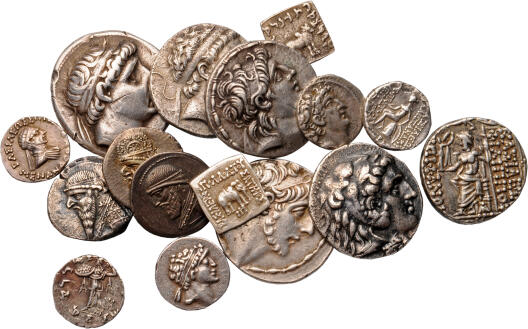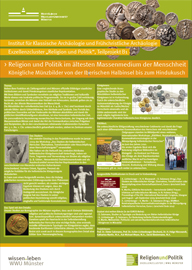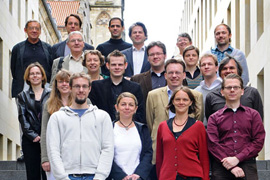(B1) Religion and Politics in the Oldest Mass Medium of Humankind: Royal Coin Portraits from the Iberian Peninsula to the Hindu Kush

The aim of the project is to work out the forms and structures of the staging of politics and religion on the coins of Hellenistic rulers. This raises the question of the unity and diversification of religious and political identity in the images and their role and structural function of collective integration in maintaining and stabilizing the ruler’s power; it is thus a question of the communication between the ruler and his subjects through the mass medium of coins.
The scientific value of coins as sources in the study of the ancient world has always been underestimated, although coins are mankind’s first mass medium and the only kind of ancient source that has come down to us with an almost complete inventory of types. In addition, they represent primary sources of state representation. The image on the coin is public and presupposes a large audience for whom it is intended.
Based on the official coins of rival dynasties of the Hellenistic Mediterranean (3rd-1st centuries BC) that were in communication with each other – from the Iberian peninsula to the Hindu Kush – the project shall compile the structural similarities and distinctions in the images’ staging of the ruler and the gods. The images on the Hellenistic royal coins offer great potential for comparative findings on the question of religion and politics in pre-modern cultures. The paradigm shift that began with Hellenism (“the omnipresence of the image of the ruler”, “the sacralisation of the image of the ruler”) has been passed along into the modern era.
Activities and preliminary (partial) results

In January 2009, the workshop “The diadem of Hellenistic rulers. Adoption, transformation or new creation of a symbol of power?” was organised as an introduction to the project’s topic. The origin of the central political religious attribute of Hellenistic kingship was questioned here: the shape, the way they were worn as well as the use of bands as religious distinctive features (for example, the taenia of gods and heroes) and as a means of expressing monarchic representation in the various cultural areas conquered by Alexander (Greece, the Middle East, Egypt, Persia) were discussed as possible archetypes for the Hellenistic royal insignia. On the one hand, it can be observed that the monocausal paradigms that have been offered so far do not do justice to the phenomenon. A second important result is that we could show that the diadem’s meaning is characterised by ambiguity: as a royal insignia, the diadem, in its political staging, has both religious and victory-related as well as functional connotations.
Our studies on the iconography of coins show that even the smallest image details carry religious and political meaning and were interpreted regionally or dynasty-specifically in different ways. In addition, hairstyles play an important role in the self-representation of Hellenistic rulers. A sophisticated typology of royal beards, developed for the first time ever, shows that certain beard styles allude to divine beards. In the ruler’s image, therefore, an assimilation to the gods and to the heroes, respectively, can also be found in this iconographic detail.
Furthermore, a comparative study on the coin images of Hellenistic queens across dynastic boundaries is currently being prepared. Here, in particular, the strong religiously legitimated or legitimising character of Hellenistic kingship becomes apparent because of the different ways that queens – as wife and/or goddess – were instrumentalised in the coin image.

The variable design of different monetary values and, thus, the issue of a sophisticated communication of the ruler with different target groups were central to another international workshop, “ImageValue. Denomination specific communication strategies in the coinage of Hellenistic rulers”, in June 2010. The first result to be formulated is the emphasis of religious visual motifs in small coins – in contrast to the king’s presence on high-quality precious metal coins, as the representative of secular power. The intention, meaning and effect of this phenomenon are to be investigated further
The meaning of money from the point of view of cultural studies and the significance of coin images within an image scientific discourse also play an important role in the project: incorporated in the study group “Money as a medium in the ancient world” members of the project team elaborated on the extent to which ancient visual elements continue into the modern age and to which modern media iconography is comparable to that of the ancient world.

